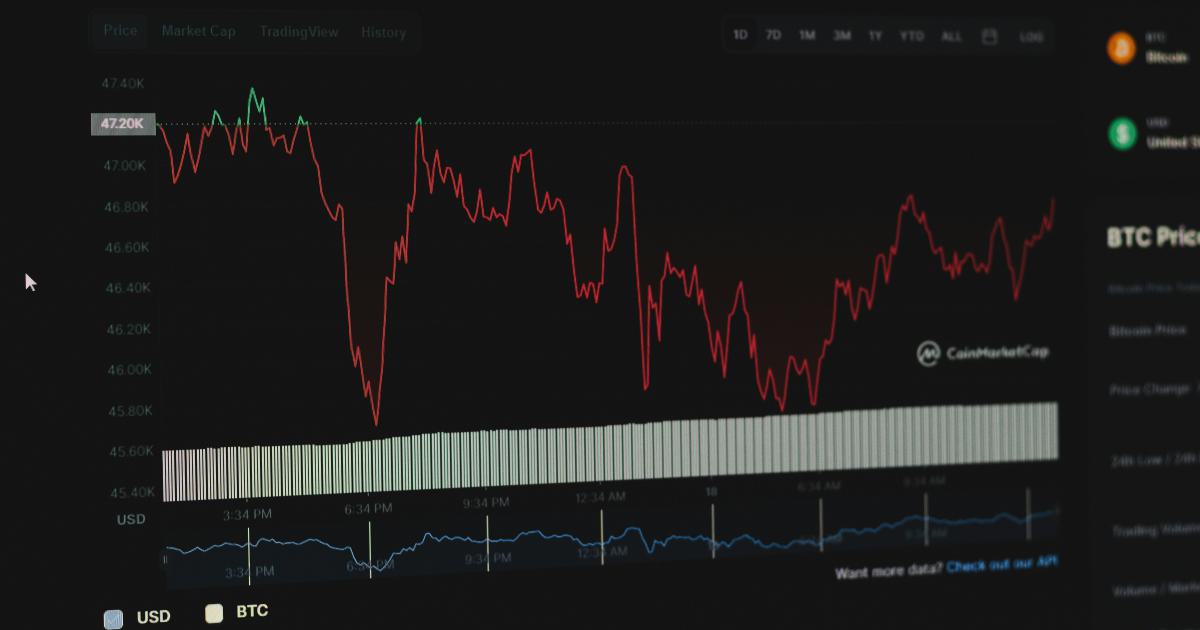Unlocking the Power of Technical Analysis Tutorials

Technical analysis tutorials have become an essential resource for traders and investors who want to unlock the power of market trends and price movements. In today’s fast-paced financial environment, technical analysis provides a systematic approach to evaluating market data, enabling both novice and seasoned traders to make informed decisions. This article dives deep into the world of technical analysis tutorials—exploring their benefits, methodologies, and actionable strategies that can turn theoretical knowledge into practical success. Whether you are just starting out or looking to enhance your analytical toolkit, understanding technical analysis is crucial for participating effectively in modern markets.
Introduction to Technical Analysis
Technical analysis is based on the study of historical price patterns, trading volume, and other market indicators to forecast future price movements. Unlike fundamental analysis, which evaluates a company’s financial health and economic conditions, technical analysis is solely focused on market-generated data. This method assumes that price movement trends, patterns, and cycles—visible on charts—can help predict future market behavior, making technical analysis tutorials a valuable asset for anyone serious about investing.
By studying technical analysis tutorials, traders can gain insights into complex charts, learn to recognize patterns, and utilize indicators that help identify potential buy and sell signals. These tutorials cover topics ranging from the basics of chart reading to advanced strategies that integrate multiple indicators and trend analyses. With this knowledge, even a beginner can build a strong foundation in understanding stock movements, forex fluctuations, or cryptocurrency volatility.
The Evolution and Rationale Behind Technical Analysis
The origins of technical analysis can be traced back centuries, notably to Japanese candlestick charting techniques. Over time, traders developed more systematic methods to study price action, incorporating statistical tools and mathematical models. The evolution of computer technology further refined these methods, allowing the development of automated trading systems and real-time charting software.
Key principles of technical analysis include the assumptions that:
- Market trends tend to persist over time.
- Price reflects all known information.
- Price movements are not entirely random, but follow recognizable patterns.
The logic behind these assumptions is evident when market conditions align with known trends. For example, support and resistance levels—critical topics in many technical analysis tutorials—act as psychological boundaries where traders tend to change their trading behavior. Understanding these dynamics empowers traders to anticipate market reversals and continuations with greater accuracy.

Core Concepts in Technical Analysis
Understanding the core concepts of technical analysis is crucial for anyone engaging with technical analysis tutorials. Here, we break down several primary tools and indicators that serve as the backbone of this analytical approach.
Chart Patterns and Trends
Chart patterns form the visual representation of market behavior and are the basis for most trading decisions. Some of the critical patterns include:
- Trend Lines and Channels: These guide lines help traders understand price momentum and the direction of the market.
- Patterns such as Head and Shoulders, Double Bottoms, and Triangles: Each pattern is associated with specific market signals. For instance, a head and shoulders pattern usually signals a reversal in an uptrend.
- Price Gaps: Gaps on a chart highlight moments of significant market imbalance when the current price swings sharply away from previously established levels.
These patterns are foundational in technical analysis tutorials, helping traders to visually assess market conditions and predict future price movements based on historical behavior.
Indicators and Oscillators
Indicators are mathematical calculations based on price and volume that help traders forecast future market movements. Some of the most popular technical indicators include:
- Moving Averages: Simple moving averages (SMA) and exponential moving averages (EMA) help smooth out price data to form an understandable trend.
- Relative Strength Index (RSI): Often used to identify overbought or oversold conditions.
- Moving Average Convergence Divergence (MACD): This indicator signals changes in the strength, direction, momentum, and duration of a trend.
Oscillators, such as the stochastic oscillator, complement these indicators by providing insights into market volatility and momentum. By integrating these with chart patterns, traders can formulate strategies that work in various market conditions.
Volume Analysis
Volume analysis studies the number of shares or contracts traded over a specific period, offering insights into the strength behind a price movement. High trading volumes typically validate the significance of a trend, as they indicate strong investor interest. Conversely, low volumes might suggest a weak move or potential for a reversal. Technical analysis tutorials often emphasize volume analysis because it complements price data, ensuring a holistic view of market activity.
Risk Management and Position Sizing
One of the most crucial aspects of technical analysis is risk management. Effective strategies are built on the premise that every trade should have a clearly defined exit strategy. Position sizing, stop-loss orders, and risk-to-reward ratios are essential elements often covered in technical analysis tutorials. This systematic approach helps in:
- Limiting losses during unexpected market reversals.
- Optimizing gains by allowing the market to run its course when a trend is favorable.
- Ensuring emotional discipline by setting clear guidelines for entry and exit.
By integrating risk management techniques with technical indicators and chart patterns, traders can create robust strategies that protect their capital even in turbulent markets.
Why Technical Analysis Tutorials are Essential
Technical analysis tutorials offer a structured way to learn and apply market analysis techniques. Here are some of the compelling reasons why investing time in these tutorials is beneficial:
Educational Value and Skill Development
Technical analysis tutorials provide step-by-step instructions that demystify complex chart reading and indicator analysis. They break down advanced topics into digestible segments, allowing learners to build on a strong knowledge foundation gradually. This educational journey is invaluable for:
- Beginners who need to grasp the basics without being overwhelmed by jargon.
- Experienced traders looking to refine their techniques or learn new strategies.
- Investors who want to complement fundamental analysis with technical insights.
Practical Application Through Simulations
Many modern technical analysis tutorials include interactive simulations and real-time charting examples. These practical applications offer:
- Hands-on experience with trading platforms.
- Opportunities to test hypotheses using historical data.
- Simulated trading environments where errors do not carry financial consequences.
Simulated trading helps learners understand the impact of technical signals and how to react under live market conditions without risking actual capital. This real-world application effectively bridges the gap between theory and practice.
Community and Collaborative Learning
Another compelling advantage of technical analysis tutorials is the community aspect. Many platforms hosted by experienced educators foster forums, webinars, and live sessions where learners can interact, share ideas, and discuss strategies. This collaborative environment provides:
- Peer support and multiple perspectives on interpreting data.
- Access to collective wisdom from a network of engaged traders.
- Continuous learning opportunities as markets evolve.
Such interactive communities enable traders to stay updated on emerging trends and adapt their strategies accordingly, making technical analysis tutorials a living, evolving resource.
Tools and Platforms for Technical Analysis Tutorials
The success of any technical analysis strategy largely depends on the tools and software used to implement it. Today, numerous online platforms and software solutions offer robust features to help traders with their analytical journey. This section explores some of the most popular choices.
Charting Software and Platforms
Choosing the right charting software is one of the first steps in mastering technical analysis. Some widely used platforms include:
- TradingView: Known for its user-friendly interface and social community features. TradingView offers advanced charting tools, indicators, and drawing features, making it an excellent starting point for technical analysis tutorials.
- MetaTrader: Popular among forex traders, MetaTrader provides extensive charting tools, automated trading capabilities, and a wealth of plugins.
- Thinkorswim: Offered by TD Ameritrade, this platform provides deep analytical tools, customizable indicators, and real-time market data ideal for professional traders.
Each of these platforms supports a wide range of technical indicators and is discussed comprehensively in many technical analysis tutorials, offering unique features for different trading styles.
Mobile Applications and Web-Based Solutions
For traders on the go, mobile applications have become an indispensable part of technical analysis. Many charting platforms have mobile versions that allow traders to monitor their positions and execute trades in real-time, regardless of location. Web-based solutions also offer the convenience of no software installation while providing robust analytical features directly in the browser.
The advantage of mobile and web-based platforms includes:
- Real-time updates that keep traders informed of market changes.
- Seamless integration with social trading communities.
- Easy access to historical data and advanced charting tools.
Integrating Third-Party Data Sources
In modern technical analysis tutorials, integrating third-party data sources, such as economic calendars, news feeds, and alternative data, is increasingly common. This integration helps traders:
- Correlate technical indicators with macroeconomic trends.
- Anticipate market movements triggered by economic events.
- Create more nuanced strategies that incorporate both technical and external data.
By synthesizing various data streams, traders can build more robust and diversified analytical frameworks that lead to well-informed market decisions.

Best Practices in Technical Analysis Tutorials
A key part of unlocking the power of technical analysis tutorials is understanding and applying best practices that ensure consistent success in market analysis. This section outlines actionable steps that traders can follow to optimize their learning and trading outcomes.
Establishing a Consistent Learning Routine
A structured approach to learning is fundamental. Here are recommendations to ensure continuous improvement:
- Schedule regular study sessions that focus on different aspects of technical analysis.
- Keep a dedicated journal to record insights, patterns observed, and lessons learned from each trading session.
- Utilize online forums and courses to stay updated on evolving market techniques.
Regular practice not only reinforces theoretical knowledge but also helps in identifying habits that require adjustment for better performance.
Combining Theory with Practical Application
Integrating practical scenarios with theoretical studies is crucial for comprehensive learning. To achieve this:
- Practice on demo accounts before transitioning to live trades. This lowers the risk while building confidence in technical methods.
- Start with simpler charts and indicators, gradually progressing to more complex analyses as familiarity grows.
- Regularly review past trades to understand what worked well and what could be improved.
By continuously linking the theory presented in technical analysis tutorials with real-world practice, traders can fine-tune their strategies and develop a sharper, more pragmatic approach.
Continuous Improvement Through Feedback
Feedback is an essential component of growth in technical analysis. Engaging with a community of fellow traders or even a mentor can provide valuable insights. Consider the following practices:
- Actively participate in discussion forums to exchange ideas and refine your strategy.
- Attend webinars and live trading sessions where experts share their experiences and tips.
- Keep track of performance metrics and review them periodically to adjust your approach.
Constructive feedback allows traders to recognize blind spots, enabling incremental yet meaningful improvement over time.
Advanced Strategies in Technical Analysis Tutorials
Once you have mastered the basics, technical analysis tutorials also offer advanced strategies that can add significant value to a trading portfolio. These strategies blend multiple analytical tools and often involve algorithmic approaches to implement trades.
Multi-Timeframe Analysis
A powerful advanced strategy involves looking at multiple timeframes to gain a deeper perspective on market trends. By analyzing both short-term and long-term charts:
- Traders can reconcile conflicting signals and identify high-probability setups.
- This technique minimizes the risk of false signals and enhances entry and exit timing.
- Multi-timeframe analysis, as taught in advanced technical analysis tutorials, allows for a more dynamic response to market changes.
Algorithmic Trading and Automation
The rise of technology has led to the proliferation of algorithmic trading, where computer programs execute trades based on predefined technical criteria. Advanced technical analysis tutorials cover:
- Coding indicators and trading algorithms that can automatically monitor and trade on market conditions.
- The importance of backtesting strategies on historical data to ensure viability under various market conditions.
- Integrating risk management frameworks into automated systems to safeguard against unexpected market swings.
Divergence and Convergence Techniques
Divergence is when an indicator moves in the opposite direction of the price, suggesting a possible reversal. Recognizing divergence and convergence patterns is one of the more nuanced aspects of technical analysis:
- For instance, if a price makes a new high but the RSI fails to follow suit, an impending market reversal might be indicated.
- Tutorials that delve into these strategies provide a detailed guide on adjusting stop-loss orders and taking profits in real-time.
Combining Technical and Sentiment Analysis
While technical analysis primarily focuses on price and volume, advanced tutorials often integrate sentiment analysis into their strategy. By considering investor sentiment—captured through news sentiment scores, social media analytics, and broader macroeconomic indicators—traders can:
- Enhance traditional technical signals.
- Identify contrarian opportunities where the market sentiment is misaligned with technical indicators.
- Gain a holistic view of potential market movements.

Real-World Case Studies in Technical Analysis
An effective way to grasp the power of technical analysis tutorials is to analyze real-world success stories and cautionary examples. In this section, we look at several case studies and scenarios that illuminate the practical impact of technical analysis.
Case Study 1: The Rise of a Forex Trader
Consider the journey of a novice forex trader who transformed their trading strategy based on technical analysis tutorials. Initially, their approach was sporadic and heavily reliant on gut feelings. However, after engaging deeply with technical lessons that focused on chart patterns, moving averages, and risk management:
- The trader began systematically identifying potential breakout points.
- They implemented a multi-timeframe strategy that significantly reduced false signals.
- Over several months, their success rate improved, and they learned to leverage tools like Fibonacci retracement levels and candlestick patterns to time their trades better.
This case study underscores the significance of rigorous study, backtesting, and consistent application of technical analysis concepts.
Case Study 2: Equity Market Trends and Technical Breakouts
Another illustrative scenario is a stock market trader who integrated technical analysis with momentum trading. By studying patterns indicating a potential breakout:
- The trader was able to identify early signs of bullish momentum.
- Using indicators like MACD and RSI, they confirmed the trend before entering positions.
- The strategy not only minimized risk with carefully placed stop-loss orders but also maximized gains through trailing stops as the trend continued.
Such examples are frequently highlighted in technical analysis tutorials as models for successful strategy implementation in volatile market conditions.
Lessons Learned from Real-World Applications
From these case studies, several key lessons emerge:
- Consistent application and adaptation of technical indicators are paramount.
- Combining multiple techniques—such as chart patterns, volume analysis, and divergence assessment—creates a robust strategy.
- Regular review and analysis of past trades help refine techniques and avoid repetitive mistakes.
These case studies demonstrate that technical analysis tutorials are not just theoretical exercises but have real-world applications that can transform a trader’s performance, provided the lessons are diligently applied and continuously refined.
Avoiding Common Pitfalls in Technical Analysis
Even the most seasoned traders can fall prey to certain pitfalls if they overlook the nuances of technical analysis. Here, we outline common mistakes and provide actionable solutions to help you stay on the right track.
Over-Reliance on Single Indicators
One of the primary cautions in technical analysis is the danger of relying too heavily on a single indicator. While tools like RSI, MACD, and moving averages can provide valuable signals, using them in isolation may lead to:
- False signals caused by market noise.
- Overlooking contextual information that explains sudden market moves.
- Misreading market sentiment if not cross-checked with additional indicators.
The recommended approach is to combine multiple technical signals. This diversification reduces the likelihood of errors and leads to better-informed trading decisions.
Neglecting Risk Management
Ignoring risk management is a crucial error. No matter how robust technical analysis seems, external factors can always lead to sudden market reversals. To mitigate this:
- Always define stop-loss levels before entering a trade.
- Implement systematic position sizing to safeguard against large losses.
- Regularly update your risk management strategy as market conditions change.
By integrating risk management with technical analysis tutorials, traders can protect their investments during unpredictable market conditions.
Emotional Trading and Decision Paralysis
Emotions can disrupt even the most carefully structured trading plans. Many traders fall into the trap of overthinking their strategies during periods of high market volatility. To counteract this:
- Develop a clear, written trading plan derived from your technical analysis tutorials.
- Practice discipline by sticking to pre-determined entry and exit points.
- Use backtesting and paper trading to build confidence before implementing live trades.
A systematic approach, coupled with a disciplined mindset, often results in more objective and successful trading outcomes.

Future Trends in Technical Analysis and Continuous Learning
The field of technical analysis is continuously evolving. With advances in technology, artificial intelligence, and data analytics, the methodologies and tools used by traders are constantly being refined. This section addresses future trends and directions that technical analysis tutorials are likely to cover in coming years.
The Rise of Artificial Intelligence and Machine Learning
One significant trend is the integration of machine learning algorithms into technical analysis. These algorithms can:
- Process vast amounts of historical data much faster than humans.
- Identify complex patterns and correlations that may not be immediately evident.
- Optimize trading strategies in real time by adapting to new market conditions.
As tutorials increasingly incorporate these advanced technologies, traders will benefit from a more data-driven and predictive approach to market analysis.
Integration of Alternative Data and Big Data Analytics
The explosion of online data has given rise to the use of alternative data sources, such as social media sentiment, weather patterns, and economic indicators, in technical analysis. This integration allows:
- The creation of more comprehensive models for market prediction.
- Real-time adjustments in trading strategies based on multifaceted data inputs.
- Enhanced performance by correlating non-traditional data with established market indicators.
In coming years, technical analysis tutorials are expected to include modules on big data analytics, providing traders with innovative tools to navigate increasingly complex market environments.
Continuous Learning and Adaptive Strategies
The dynamic nature of modern markets means that technical analysis is not a “one-size-fits-all” solution. The best traders continuously update their knowledge through ongoing education and adapt their methods as market conditions evolve. Online platforms, webinars, and discussion forums play a crucial role in this continuous learning process. Embracing change and staying updated with industry trends is essential for long-term success.
Final Thoughts and Conclusion
Unlocking the power of technical analysis tutorials is more than a journey through charts and indicators—it is an evolving process of learning, practice, and adaptation. Whether you are a novice learning the basics or an expert integrating advanced methodologies into your trading strategy, technical analysis offers the tools needed to decode market movements and seize opportunities.
Key Takeaways
- Technical analysis tutorials serve as invaluable guides for understanding market behavior, providing practical tools—such as chart patterns, indicators, and risk management strategies—to enhance trading performance.
- Combining theoretical knowledge with real-world application through simulations, backtesting, and community engagement helps transform technical skills into consistent results.
- Embracing advanced strategies like multi-timeframe analysis, algorithmic trading, and sentiment integration can refine your approach, while also emphasizing the critical role of continuous learning in a rapidly evolving market environment.
By harnessing these insightful lessons and integrating proven techniques, traders can not only navigate uncertainty but also unlock substantial potential in market phenomena. The strength of technical analysis lies in its adaptability and the continuous improvement of strategies that evolve with the pulse of the market.
Investing time in quality technical analysis tutorials is an investment in your trading future. Whether you are refining an existing strategy or building a new one from scratch, let this guide be a stepping stone on your journey towards a more robust, confident, and analytical trading approach.
In conclusion, the world of technical analysis is rich and multifaceted. Through careful study, disciplined practice, and constant adaptation, anyone can master the art of reading market trends and making informed decisions. As markets evolve, so must our strategies—ensuring that the lessons learned from technical analysis tutorials remain relevant and continually empowering, no matter what challenges lie ahead.
Happy trading and may your journey with technical analysis be as rewarding as it is insightful!
Unmatched Trading Power with Binance
Are you ready to take your trading game to new heights? Binance offers a cutting-edge platform for seamless cryptocurrency transactions.
With lightning-fast execution, top-tier security, and a vast selection of coins, you'll have all the tools you need to maximize your profits. Join now and experience the future of trading.
Ariadne Petrou
44 posts written





